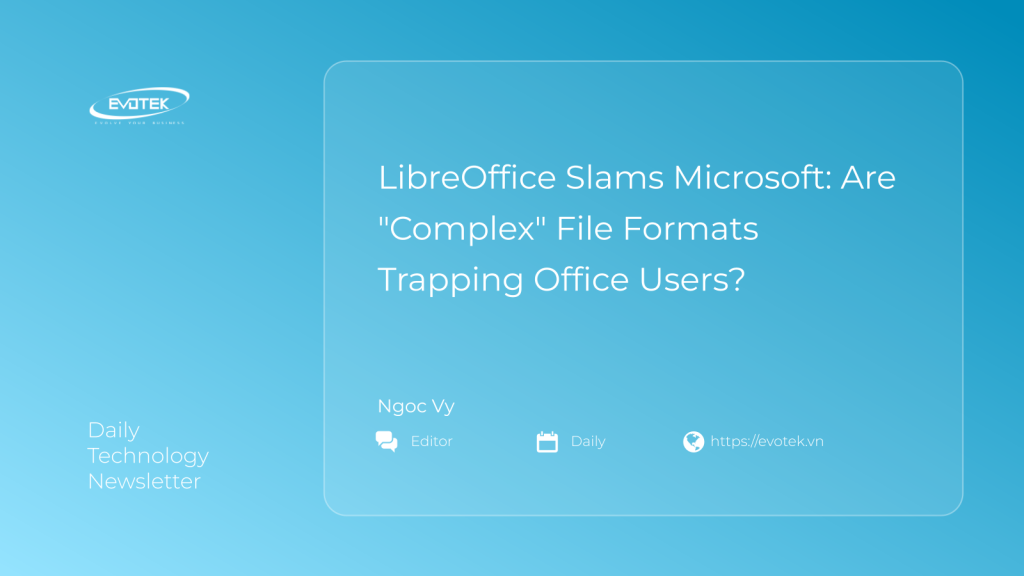LibreOffice has once again taken a strong stance against Microsoft, this time accusing the tech giant of intentionally using “unnecessarily complex” file formats within its Microsoft 365 (Office) suite to achieve user lock-in.
The core of the issue revolves around XML (Extensible Markup Language), a fundamental technology used by modern productivity suites like Microsoft 365 and LibreOffice to structure and define documents. According to LibreOffice, an XML schema, described in an XML Schema Definition (XSD) file, defines the structure, data types, and rules for an XML document. In theory, XML and XSD should facilitate interoperability between different software applications.
The Battle of Document Formats: ODF vs. OOXML
The two major office suites diverge significantly in their approach to document formats:
- LibreOffice champions the OpenDocument Format (ODF), an open standard designed to be vendor-neutral and not controlled by any single corporation. This commitment yields familiar file types like .odt for text documents and .ods for spreadsheets.
- Microsoft, conversely, developed its own Office Open XML (OOXML). While intended to support every feature within its proprietary software, leading to the widely recognized .docx and .xlsx files, LibreOffice argues its design actively hinders compatibility.
Interestingly, both ODF and OOXML files are essentially ZIP archives. Users can easily verify this by renaming a .docx file to .zip and decompressing it to reveal the underlying structure of a Microsoft 365 document.
Complexity as a Barrier: The “Weaponized Bridge”
LibreOffice posits that while XML is meant to serve as “a bridge” for data exchange, Microsoft has transformed its own schema into a weapon. By making OOXML so “complex,” it becomes a barrier rather than a facilitating link.
The analogy used is that of a railway system: the tracks might be public, but if one company’s control system is so convoluted, no other entity can build a compatible train. This effectively eliminates competition and makes it nearly impossible for users to transition their documents seamlessly to alternative software. Crucially, the “passengers” (users) often remain unaware that they are being held “hostage” by these technical hurdles.
Intricate Design for User Retention
Examples of this alleged complexity include deeply nested structures, non-intuitive naming conventions, and an excessive number of optional elements. For developers outside of Microsoft, implementing the OOXML format correctly becomes a development nightmare. Even a seemingly simple sentence can unravel into a labyrinth of nested tags, making accurate parsing by non-Microsoft software exceedingly difficult, despite appearing identical on screen.
Beyond Documents: Connecting to Windows 11
LibreOffice sees this file format lock-in as part of a broader strategy by Microsoft to retain its user base. It draws a direct parallel to Microsoft’s push for Windows 11, arguing that there’s no compelling technical reason to force users to upgrade. Instead, LibreOffice suggests this move, much like the complex file formats, is designed to keep customers tethered to the Microsoft ecosystem.
In response to these perceived tactics, LibreOffice is actively urging Windows and Office users to consider migrating away from Microsoft’s operating system and productivity suite. Their recommendation: make the switch to Linux and LibreOffice for a more open and interoperable computing experience.

 日本語
日本語 한국어
한국어 Tiếng Việt
Tiếng Việt 简体中文
简体中文